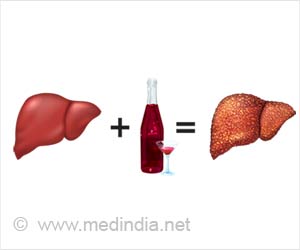Highlights:
- Breastfeeding for at least six months found to reduce the risk of developing the non-alcoholic fatty liver disease (NAFLD)
- Currently, there is no cure for NAFLD and breastfeeding may be a modifiable factor (a risk factor that is under a person’s control) to reduce the risk or even prevent the development of this potentially serious condition
- Non-alcoholic fatty liver disease (NAFLD) is the most common cause of chronic liver disease in the US and if untreated can progress to liver cancer
Read More..
Can Breastfeeding Protect Women from Developing NAFLD Later?
Currently, there is no cure for the non-alcoholic fatty liver disease. The only option for reducing the risk or preventing it is to follow a healthy lifestyle. The current study was undertaken to find if breastfeeding could protect against the development of NAFLD and act as a modifiable risk factor.Data for the current study was gathered from the Coronary Artery Risk Development in Young Adults (CARDIA) study, a multicenter prospective cohort study of 844 white and black women who were followed up every two to five years for up to 30 years. The unique design of the CARDIA study allows evaluation of metabolic risk factors (example - obesity, blood sugar and cholesterol levels) in a woman right from pre-pregnancy years through pregnancy and up to lactation
- The enlisting for the study began in 1985-86 when all the participants were assessed for underlying risk factors and biochemical markers
- Women who gave birth during the study reported the duration of breastfeeding for each baby over the following 25 years
- On completion of the study period, the women underwent a computed tomography (CT) scan of their abdomens, to estimate the amount of fat in their livers as a sign of NALFD
What were the Findings of Study
- Women who breastfed one or more children for more than six months duration had a lesser risk of NAFLD compared to women who never breastfed or did so for less than a month
- Women diagnosed with NAFLD 25 years later had a bigger waist circumference, higher body mass index, higher triglycerides and lower HDL cholesterol when compared to those without NAFLD
"Breastfeeding and its benefits to the child have been widely studied for years," said Veeral Ajmera, MD, a hepatologist at UC San Diego Health and an assistant professor of medicine at UC San School of Medicine. "However, this new analysis contributes to the growing body of evidence showing that breastfeeding a child also offers significant health benefits to the mother -- namely, protecting her from developing non-alcoholic fatty liver disease in middle age."
What is Non-Alcoholic Fatty Liver Disease (NAFLD)?
Non-alcoholic fatty liver disease, as the name suggests occurs due to the accumulation of fat in the liver cells. The reasons for this condition are not clear, but risk factors include the following –- Overweight or obesity (especially excess fat around the waist)
- Age over 50 years
- High blood pressure
- Type 2 diabetes
- High cholesterol
- Smoking
Diet & Exercise Maybe additional Factor in Preventing Non-alcoholic Fatty Liver Disease
More research is required to find out how breastfeeding affects Non-alcoholic fatty liver disease (NAFLD) and whether breastfeeding can decrease the severity of the condition, but the current study shows that socio-economic factors can influence development and progression of serious metabolic diseases.
To conclude with the remarks of Ajmera, "Non-alcoholic fatty liver disease and all metabolic diseases have a unique relationship with socioeconomic factors. The inclusion of additional information regarding diet and exercise only further strengthen our claim that breastfeeding is beneficial in the prevention of non-alcoholic fatty liver disease."
Reference:
- Longer lactation duration is associated with decreased prevalence of non-alcoholic fatty liver disease in women - (http://dx.doi.org/10.1016/j.jhep.2018.09.013)
Source-Medindia
















